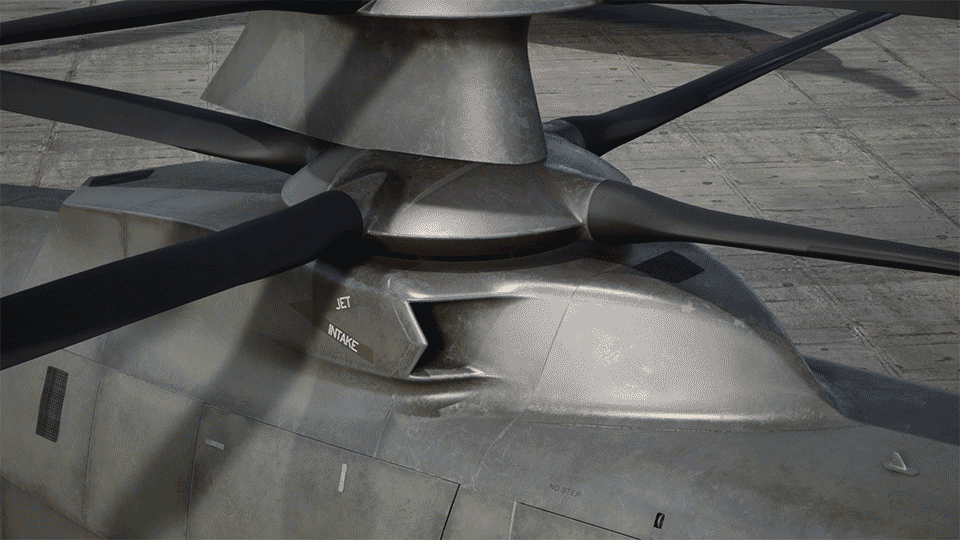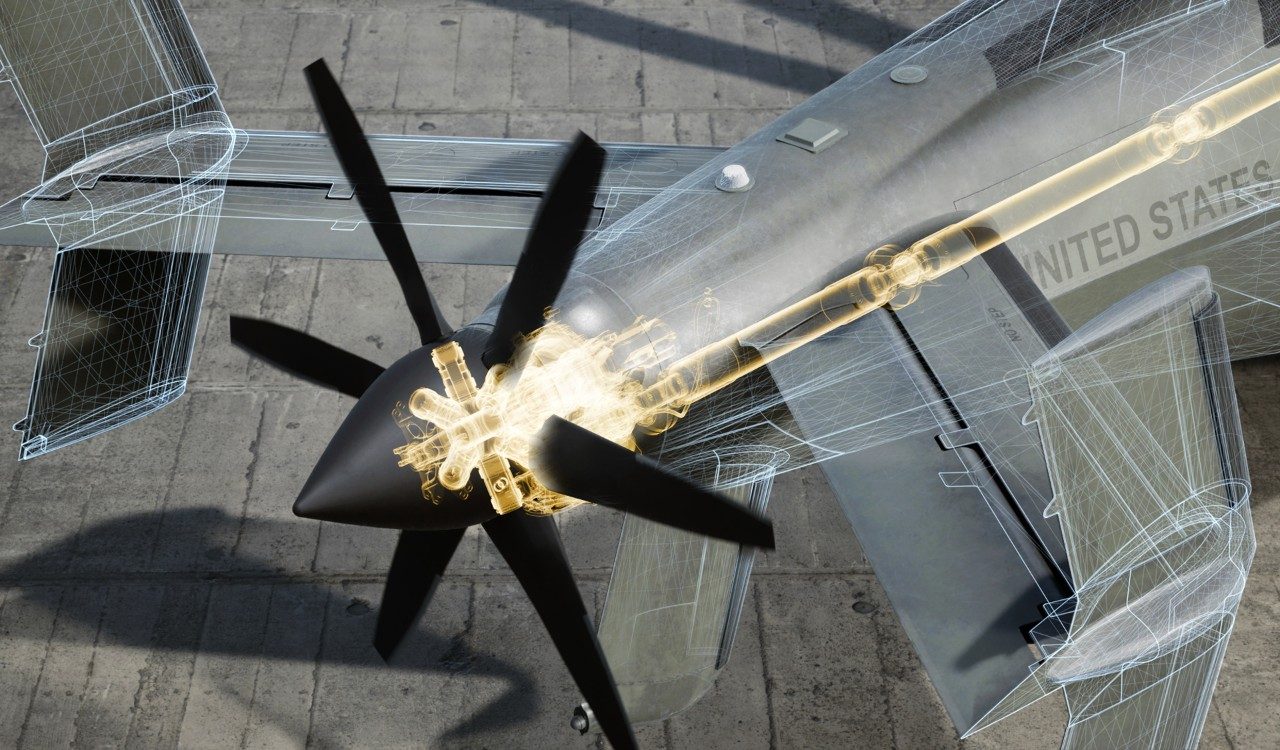Sikorsky senior engineer Pete Germanowski has an insider’s view of Future Vertical Lift (FVL).
Literally.
Through a digital environment that has been embedded throughout the Lockheed Martin engineering, manufacturing and sustainment workforce for more than half a decade, Germanowski and fellow systems designers and integrators can see inside RAIDER X®, Lockheed Martin’s Future Attack Reconnaissance Aircraft (FARA) prototype it’s building for the U.S. Army.
Germanowski credits Lockheed Martin’s early embrace of digital engineering on proven programs, like the HH-60W Combat Rescue Helicopter and the CH-53K Heavy Lift Helicopter, for the ability to rapidly view, develop, iterate and save designs in collaboration with his teammates across the life cycle of the aircraft – all informed by real-time flight test data from the company’s S-97 RAIDER helicopter.
Here’s how Lockheed Martin’s successful digital thread approach will help bring transformational capability and value to the Army through both the RAIDER X and DEFIANT, Sikorsky and Boeing’s answer for the Future Long-Range Assault Aircraft (FLRAA):

Driving Faster Progress with Digital Design
Imagine a world where future aircraft will take their first flights on a computer – Lockheed Martin is making this future a reality, and the result is hyper-reliable data and a radically scaled down flight test program.
To do this, the company is leveraging an established, low-risk manufacturing capability augmented by a more than $600 million investment in digital thread and advanced manufacturing. The practical result turns the test and development paradigm on its head, meaning the use of a virtual prototype will eventually replace physical test articles and radically decrease the costs associated with development.
“We’re working to harness the power of a digital model that, unlike the physical design drawings of years past, can be updated in real time,” Germanowski said. “Since the designs and all accompanying data – including engineering, manufacturing and sustainment data – is available instantly, the entire engineering team in different locations and with different areas of expertise can always innovate together no matter what.”
Speed is one of the major benefits of digital design and virtual reality. Teams have the same data so they can try ideas and move the design to a virtual reality environment at a pace that was once unthinkable. This is not only crucial in the design phase but also enables future upgrades to be efficient and affordable.
Erskine “Ramsey” Bentley, Sikorsky director of Future Vertical Lift Programs, agrees.
“The ability we have to design – and then test – both the FLRAA and FARA aircraft in virtual reality is a big deal,” he said. “Designers and integrators work with the operators, maintainers and sustainers from the very beginning, validating every step of the way that these aircraft will deliver on their X2 Technology promise. Our process works: Our ongoing flight test programs for both RAIDER and the Sikorsky-Boeing DEFIANT continue to validate our analytical models.”
Integrating the people who operate and maintain aircraft from the outset means design updates that might have been flagged later in the process happen much earlier. This means costly delays and rework can be avoided, explained Bentley.
For example, using advanced manufacturing techniques, engineers printed a 3D cockpit, so operators could experience the interactions of the door frame with the pilot’s space and offer feedback. Maintainers have performed procedures at scale in virtual reality labs, sharing their perspective with designers on everything from ease of access, to ergonomics, to how straightforward it is to remove parts for servicing.
“Why not bring the operators and maintainers in early?” suggested Bentley. “They’re able to verify and develop maintenance procedures on these helicopters literally as we’re designing them. They’re able to say what features would help them carry out their missions most effectively. In fact, their feedback has helped shape the design the whole way through so it makes the most sense for the people who will be touching and flying these aircraft day in and day out.”
And the digital backbone enables the team to already account for future capabilities the Army could add to these aircraft in the decades to come.
“Because of the growth we’re building into our design, RAIDER X is ready to accept immediate growth in the Improved Turbine Engine (ITE) power as well as mission systems through our open architecture and digital backbone, providing decades of future capabilities and relevance by increasing FARA reach, survivability and lethality,” Germanowski said.
Programs throughout Lockheed Martin are born in a digital environment where designs begin in 3D and are maintained throughout the manufacturing and assembly process.
Pulling the Digital Thread through Maintenance and Sustainment
Digital design and the resultant aircraft will re-baseline future sustainment and overall aircraft life cycle management.
The digital thread runs seamlessly throughout Lockheed Martin’s design, development, production and sustainment process. “It’s really one interconnected business process. Innovations that are implemented early in the design and engineering phase are carried all the way through the manufacturing and sustainment process,” said Germanowski. “It’s a holistic life-cycle approach that we’ve built into other programs at Sikorsky such as the CH-53K heavy-lift helicopter and are utilizing for current production and future programs also born in an all-digital environment.”
Practically speaking, the digital thread makes it possible to achieve a highly cost-efficient sustainment process. Lockheed Martin’s digital design incorporates advanced and predictive diagnostic systems to facilitate performance-based logistics and condition-based maintenance. Data refineries facilitate efficient data reuse and sharing across platforms to identify trends and tie costs to readiness. By incorporating digital transformation tools with new processes to integrate technologies, collect, monitor, and analyze data throughout the life cycle it’s possible to lower costs and enable improved reliability growth throughout the aircraft.
“We’re already seeing success on other aircraft, such as the Sikorsky commercial fleet, and are also implementing similar tools on the Combat Rescue Helicopter and CH-53K. Every single FVL aircraft will be monitored for every single hour of its life through the advanced prognostics we’re integrating,” Germanowski said. “Operators won’t have to replace a part according to a rigid hours-based schedule that mandates part replacement even if it still has some life left in it.”
Instead, he said, tracking actual usage and factoring in data from advanced sensors will alert maintainers precisely when a part needs to be replaced, whether for damage or normal wear and tear. By leveraging data analytics through our mature Condition-Based Maintenance approach, the Army will spend less and get much more value from the parts they buy.

Similarly, if customers share data, it can help optimize the spares that must be produced, which ensures the inventory available always matches the demand.
The digital thread also incorporates a digital twin. Every individual RAIDER X and Sikorsky-Boeing DEFIANT will have a digital twin that’s built alongside it and provided to the operator. This will show both the aircraft configuration and the health and usage monitoring.
“This is a living record of how each aircraft is used, what maintenance has been done, how parts were replaced, you name it,” said Germanowski. “The customer will always know exactly how each aircraft was upgraded and serviced at every point over its lifecycle.”
As the Army continues to define the future of vertical lift, Lockheed Martin’s designs continue to validate their promise. In March 2020, the U.S. Army selected both X2 aircraft – the Sikorsky-Boeing DEFIANT and RAIDER X – to advance to the next phase of their respective programs.




